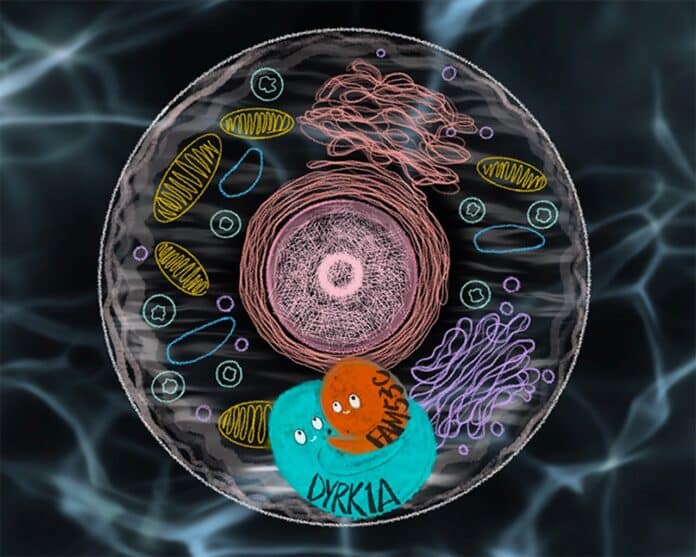Down syndrome, a congenital disorder, results from abnormal cell division. Kyoto University researchers have discovered FAM53C, a protein inhibiting DYRK1A, the dysfunctional kinase linked to Down syndrome and autism. This finding sheds light on cellular mechanisms, offering potential for targeted treatments.
First author Yoshihiko Miyata at KyotoU’s Graduate School of Biostudies said, “Our findings demonstrate the important role of the intracellular regulatory mechanism of DYRK1A in the normal development and function of the neuropsychiatric system.”
“I’m fascinated by the intricate regulation of human brain development,” said Miyata. Down syndrome, besides causing neuropsychiatric symptoms, may lead to Alzheimer’s, diabetes, and facial issues. “Due to DYRK1A’s importance, we’re investigating molecules that interact with it,” Miyata adds.
DYRK1A is a crucial protein controlling various biological functions, especially in the nervous system. It regulates cell cycle, differentiation, cytoskeletal formation, and DNA damage response. After identifying DCAF7/WDR68 as an essential DYRK1A binder, Kyoto University’s Miyata used mass spectrometry to find other proteins influencing DYRK1A.
FAM53C, a flexible protein, directly binds DYRK1A, reducing its kinase activity. This interaction anchors DYRK1A in the cytoplasm, impacting gene expression regulation. Miyata sees potential clinical insights from understanding how FAM53C regulates DYRK1A’s activity.
The study’s protein-protein interaction discovery, particularly involving FAM53C and DYRK1A, unveils potential molecular mechanisms underlying Down syndrome. This research enhances our understanding of cellular processes and holds promise for future clinical insights and targeted therapeutic interventions.
Journal reference:
- Yoshihiko Miyata, Eisuke Nishida, Open Access Identification of FAM53C as a cytosolic-anchoring inhibitory binding protein of the kinase DYRK1A. Life Science Alliance. DOI: 10.26508/lsa.202302129.
